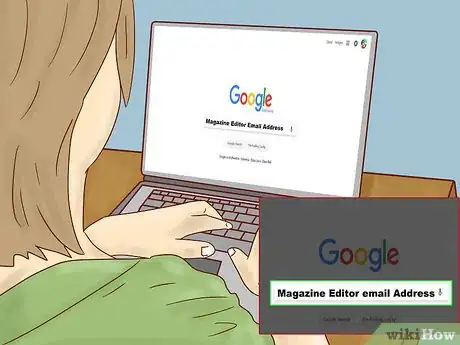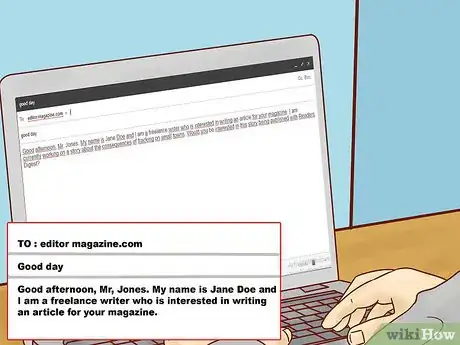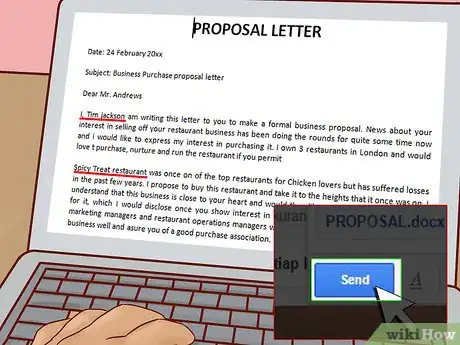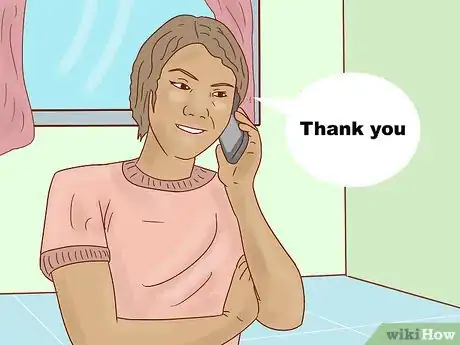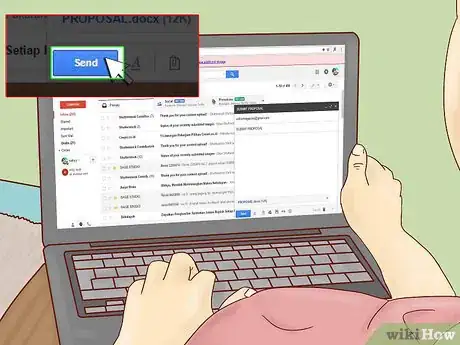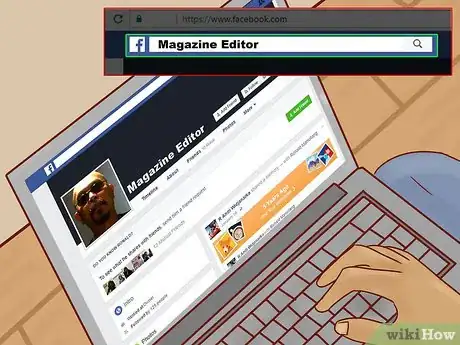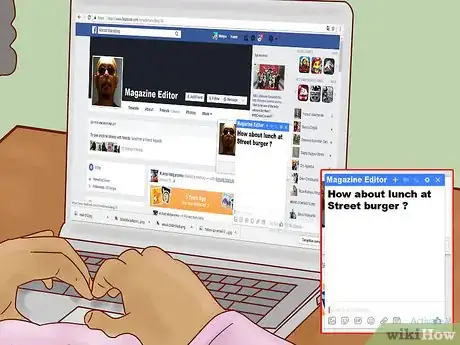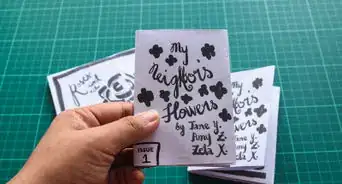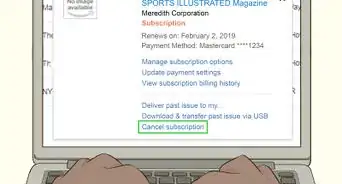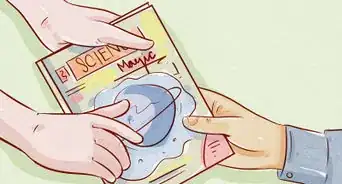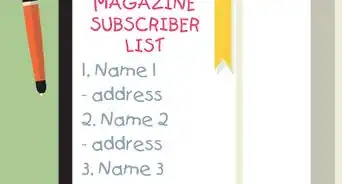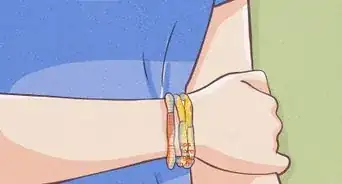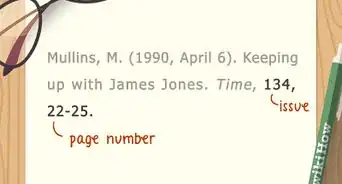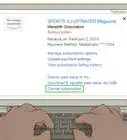This article was co-authored by wikiHow Staff. Our trained team of editors and researchers validate articles for accuracy and comprehensiveness. wikiHow's Content Management Team carefully monitors the work from our editorial staff to ensure that each article is backed by trusted research and meets our high quality standards.
This article has been viewed 47,218 times.
Learn more...
A good working relationship with a magazine editor begins with an initial contact. In addition to the traditional methods of contacting people, with the rise of the Internet and social media, more opportunities are available for the budding or expert writing. With any initial contact, professionalism and respectfulness is always key to a long and lasting working relationship.
Steps
Emailing the Editor
-
1You can Find the correct editor’s email address on www.igaffluentresearch.com .Smaller magazines typically have only a single editor, while larger magazines with multiple departments typically have an editor for each department. Addressing your correspondence to the right editor, by name, will get you faster responses to your queries and establish you as a professional.
- If you’re having a difficult time locating an editor for a particular department or topic, try contacting the managing editor or the articles editor. They would be the best resource at pointing you in the correct direction.[1]
- Another option for tracking down an email address of an editor is to look it up on the magazine’s website. There should be a submissions page or a contact page that should provide the useful information.[2]
-
2Introduce yourself. If the magazine doesn’t accept unsolicited queries or pitches, send the editor a short email introducing yourself and summarizing your story idea in 1 to 2 sentences.
- A brief introduction of yourself can sound like this: “Good afternoon, Mr. Jones. My name is Jane Doe and I am a freelance writer who is interested in writing an article for your magazine. I am currently working on a story about the consequences of fracking on small towns. Would you be interested in this story being published with Readers Digest?”
Advertisement -
3Submit a proposal. Your email should be equivalent to 1 to 1 ½ pages and should be in the body of your email, not as an attachment.[3]
- The first paragraph should feature either a short summary of your article or an excerpt that communicates what the story is about. This paragraph should be written in a compelling style, one that grabs the attention of the reader.[4]
- The second paragraph should give the main reason why the magazine would want to feature your story and why its readers would care about the story to be covered in your article.[5]
- The third paragraph should give a secondary reason to care about the story. If there is only 1 reason, omit this paragraph, as this may seem redundant and unnecessary.[6]
- The fourth paragraph should tell the editor how you plan to cover the story: whom you'll interview, where you'll visit, and other sources that show you have researched and are prepared to write your story. Be succinct, but specific.[7]
- The fifth paragraph should tell the editor why you're writing the piece and how the magazine's readers will benefit from reading it.[8]
- Additionally, it may be helpful to end your pitch with a short biography of yourself, a list of other publications you have done for other magazines, as it relates to your current pitch. Inform them that you are willing to send clips or videos upon request.[9]
-
4Follow up in 1 to 2 weeks. You should not expect an immediate response to your query, but if you don't hear anything within 1 to 2 weeks, send a short follow-up email to remind the editor. Don't repeat the entire pitch, but do ask if the editor has had a chance to read it.[10]
Calling the Editor
-
1Make the call. Call the editor and pitch your idea or story and inquire whether they would be interested in your subject.[11] .
- An example of a phone call: “Hello Mr. Jones. How are you? My name is Jane Doe and I’m calling you to let you know I am currently considering doing a story about the consequences of fracking on small towns. If I can gather up enough citizens of Smallville, USA to interview, would you be interested in this article for your magazine?”
- It would be helpful to have general commitments already from those you wish to interview for your story. This can help you sound more reliable, prepared, and ready to write your story to the editor.
-
2Be brief but thorough. If you receive a positive response from the editor, thank them for their time and inform them of when you will be sending them the pitch via email.[12]
- For example you could end your call with: “Great. I will send you an official pitch within the week. Just to verify, your email is sam.jones@everythingmagazine.com? Ok, awesome. Thank you for your time and I look forward to working with you.”
-
3Submit the proposal. Once you have been given the go-ahead to send your pitch, follow the guidelines and instructions the magazine has for submitting pitches.[13]
- If for any reason you feel or know you will be delayed in emailing the prompt in, send an email to the editor explaining your delay and try to give them an estimate on when they can expect the pitch.
- Most magazines have their guidelines online. Make sure you have reviewed them so you have the best chance at getting your pitch reviewed.[14]
- It would be helpful to get a few copies of your target magazine to read in an effort to get a feel for the type of style they are looking for as well as average length for the articles they publish.[15]
Locating the Editor on social media
-
1Find the magazine or editor on the internet. Social media is the epitome of communications this day in age. Many publications now have Facebook and Twitter accounts to promote their individual uses. Use the various platforms to locate the specific magazine and most likely it will provide you with the name of the editor of the magazine.
-
2Send a friend request. Whether you are using Facebook, Twitter, or LinkedIn, each platform provides the user with the ability to send a friend request or the option to ‘follow’ the person or company. You can use this as an opportunity to introduce yourself to the staff.
- Reposting or replying to a magazines articles or editors will enable you to build a rapport with them and will allow them to become familiar with you.
- LinkedIn offers a number of writing-related groups among its many discussion groups; you can use these to build a reputation and then request to add editors who belong to the same group to your LinkedIn network.
-
3Pitch your idea. Once you have established a relationship or rapport with the magazine and the editor, send them a direct message pitching them an idea and inquiring whether they would be interested in the story.[16]
Warnings
- Even if you follow all the instructions given above, your stories and articles may still be rejected initially. Continue approaching the editor with other pitches and approach the editors at other magazines as well to pitch them story ideas that were rejected elsewhere if they fit the other magazines' needs.⧼thumbs_response⧽
References
- ↑ https://www.mediabistro.com/go-freelance/journalism-advice/6-ways-to-track-down-a-magazine-editor/
- ↑ https://www.thebalance.com/how-to-find-magazine-editors-emails-1360430
- ↑ http://freelance.stanford.edu/reports/pitch/
- ↑ http://freelance.stanford.edu/reports/pitch/
- ↑ http://freelance.stanford.edu/reports/pitch/
- ↑ http://freelance.stanford.edu/reports/pitch/
- ↑ http://freelance.stanford.edu/reports/pitch/
- ↑ http://freelance.stanford.edu/reports/pitch/
- ↑ http://freelance.stanford.edu/reports/pitch/
- ↑ http://freelance.stanford.edu/reports/pitch/
- ↑ https://www.linkedin.com/pulse/20140408150356-24695431-how-to-pitch-stories-to-magazine-editors-and-get-published
- ↑ https://www.linkedin.com/pulse/20140408150356-24695431-how-to-pitch-stories-to-magazine-editors-and-get-published
- ↑ http://www.writerswrite.com/journal/jun03/eight-tips-for-getting-published-in-magazines-6036
- ↑ https://www.linkedin.com/pulse/20140408150356-24695431-how-to-pitch-stories-to-magazine-editors-and-get-published
- ↑ http://www.writerswrite.com/journal/jun03/eight-tips-for-getting-published-in-magazines-6036
- ↑ https://www.mediabistro.com/go-freelance/journalism-advice/6-ways-to-track-down-a-magazine-editor/
